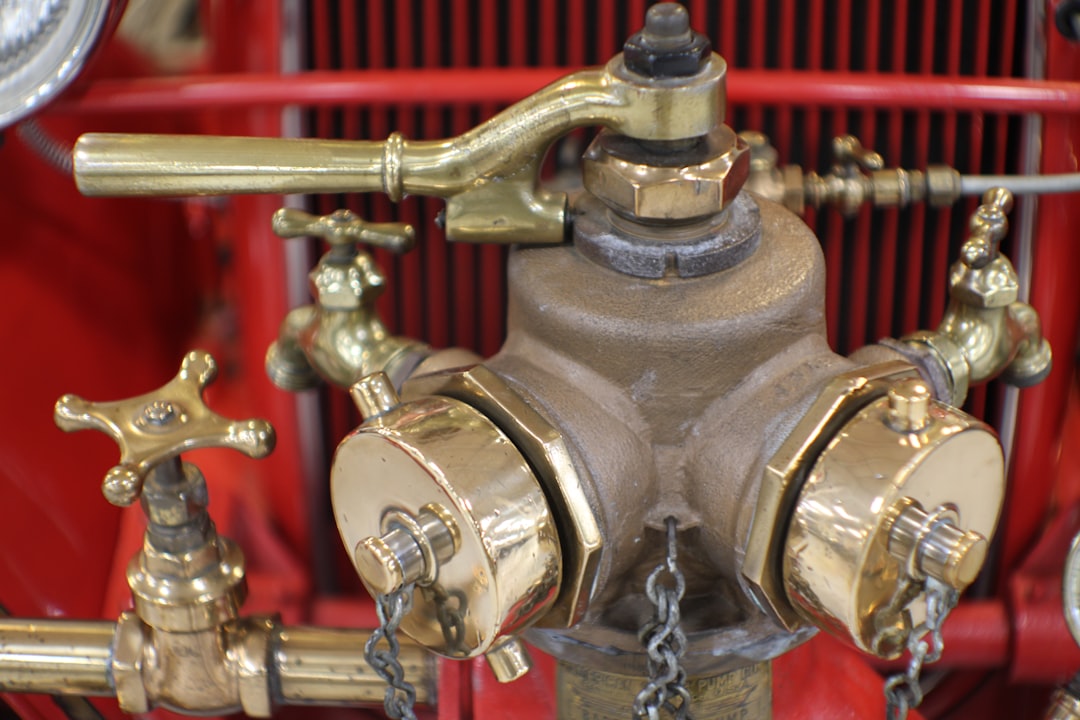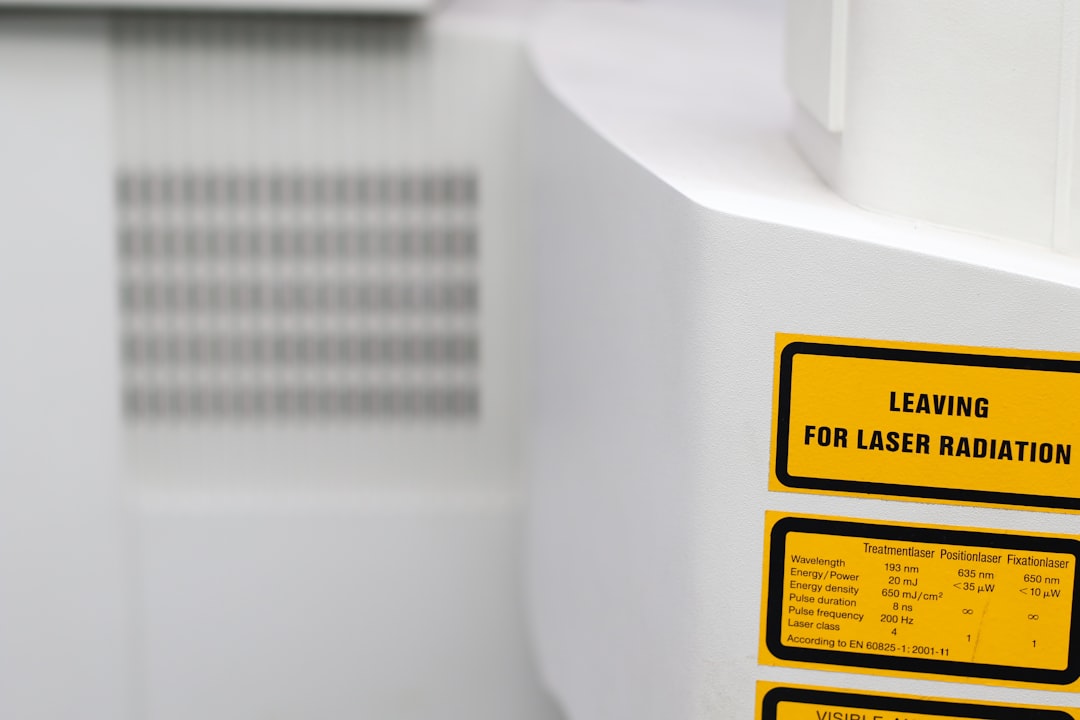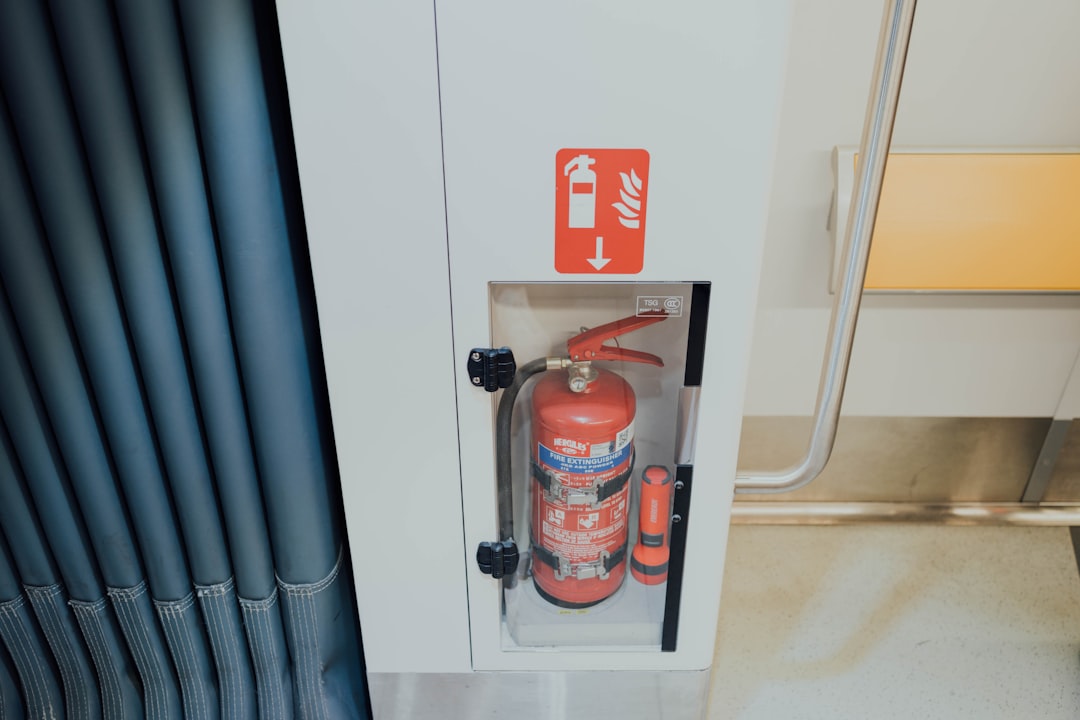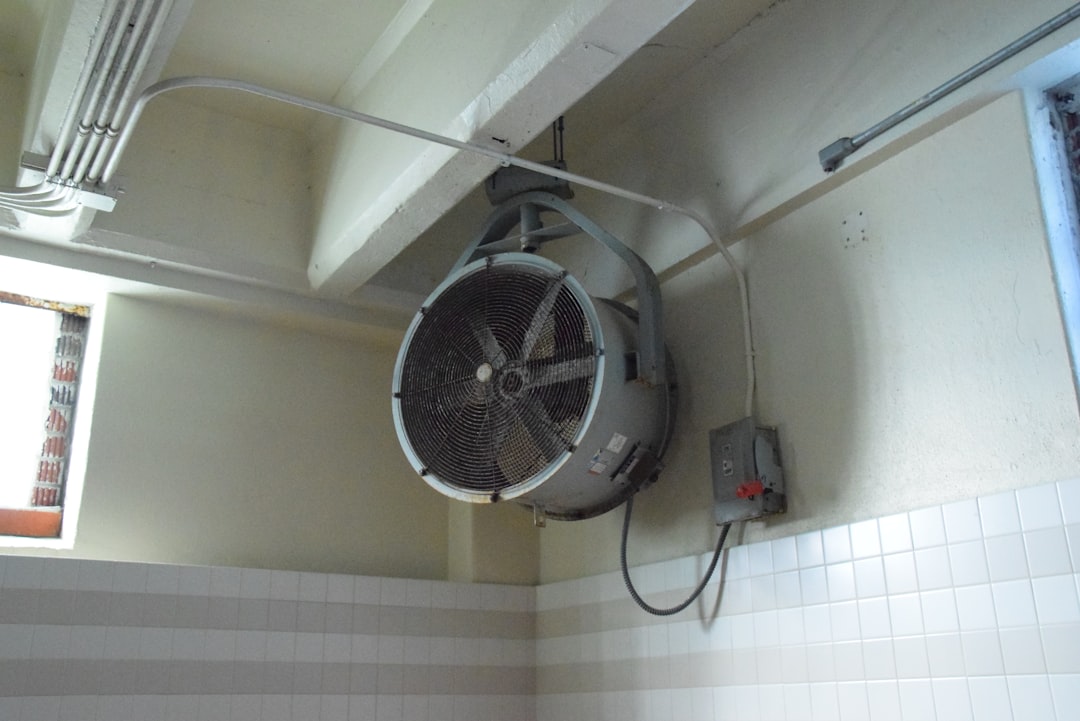

Engage prospects with a scan and streamline customer engagement with FREE QR code marketing tools by Sona – no strings attached!
Create a Free QR CodeFree consultation

No commitment

Engage prospects with a scan and streamline customer engagement with FREE QR code marketing tools by Sona – no strings attached!
Create a Free QR CodeFree consultation

No commitment
In today's digitally driven world, QR codes have evolved from a novelty to a strategic powerhouse in bridging offline engagement with online action. For heat pump cleaning services, QR codes represent a practical, flexible, and data-driven way to boost customer acquisition and streamline vital touchpoints, without requiring an app download or complex tech setup.
The physical nature of HVAC and heat pump service means interactions often start offline on direct mail, flyers, equipment, or service vans. A recurring frustration is that high-intent prospects may research or show interest without ever submitting a form or making their intent known. QR codes make it effortless for these potential customers to instantly access booking pages, request service quotes, download maintenance tips, or access warranty information, all with a single scan. The result is fewer gaps where prospects might otherwise remain anonymous and unpursued.
By integrating QR codes at key customer touchpoints, heat pump cleaning service providers can modernize traditional marketing and collect actionable data that often slips through the cracks with legacy approaches. Missing high-value opportunities and incomplete customer data are common pain points. QR-enabled workflows create accountability and reduce manual errors while fueling higher efficiency, better targeting, and increased revenue. This guide explores how leveraging QR codes addresses the root causes of missed opportunities and illustrates how service providers can harness their potential for measurable ROI. See HVAC marketing strategies.

Traditional approaches in the industry rely on cumbersome paper forms, misplaced business cards, and static brochures. These methods often result in lost leads, incomplete data entry, and delays that make it harder for customers to book service when interest is high. QR codes bridge the gap by turning any physical touchpoint into an instant path to action, whether that action is booking a service, downloading maintenance tips, or requesting a quote.
When properly planned, QR codes reduce friction for prospects and create measurable outcomes for providers. They eliminate the need for manual follow-up, capture clear attribution for offline campaigns, and help teams respond in real time to what customers are actually engaging with. Here’s how heat pump cleaning service providers can implement QR codes effectively.
As you digitize workflows with QR codes, you can expect to see higher conversion rates and a meaningful uplift in actionable leads. Together, these tactics transform previously anonymous interest into a steady flow of qualified demand, while giving your team the insight needed to continuously optimize.

Heat pump cleaning services face persistent challenges connecting offline interactions to digital actions. Customers often encounter your brand on vehicle signage, door hangers, equipment labels, or local mailers, then fail to take action because the next step is unclear or tedious. Providers also struggle to attribute which print materials are working and cannot always see which households are actively considering service until a call or email arrives.
QR codes directly address these issues by turning every touchpoint into a fast digital gateway. Customers scan, then book, request information, or watch how-to content immediately. Service teams get measurable data on which placements drive engagement and which messages resonate. Over time, this creates a clearer picture of the customer journey and accelerates pipeline growth.
For heat pump cleaning providers, the results are practical. Appointments can be booked directly from door hangers, seasonal tune-up reminders can be triggered from fridge magnets, and warranty registration can be completed from an equipment label. The industry’s most common materials become measurable, interactive gateways that align with customers’ real-world behaviors.
Because customers interact with your brand in varied contexts, choosing the right QR format and destination matters. The most effective programs match the format to the moment so scanners are taken to a page that fits their intent, device, and environment. Providers who do this well see more completed bookings and better data capture.
Dynamic codes are particularly valuable in heat pump cleaning since they allow for easy destination changes as seasons shift and promotions rotate. Static codes still have a place for permanent placements like equipment tags or warranty cards. The best approach is to mix both based on the expected lifespan and the need for ongoing updates.
With a QR management platform, you can generate and manage these formats centrally, monitor their performance, and easily switch destinations as your campaigns evolve. For most heat pump cleaning businesses, web links and forms will deliver the highest impact, followed by vCards and SMS for frictionless contact.

Growth in heat pump cleaning often stalls when interest is not captured during offline moments. A neighbor sees your van, a homeowner glances at a door hanger, or a property manager reads a maintenance report, then moves on. Placing QR codes in high-intent contexts changes the outcome by pairing interest with an immediate action.
The best placements meet customers where they already are. They present a simple, specific next step and make the benefit obvious. When you prioritize visibility, scannability, and value, your most common assets become high-performance lead sources that feed your pipeline consistently.
By consistently deploying QR codes across these moments and reviewing scan performance, you can uncover which channels and messages drive the most conversions. This cycle of placement, measurement, and optimization is what turns scattered impressions into sustainable growth.

QR codes excel when they map neatly to common customer interactions and each scan delivers a clear benefit. The top use cases for heat pump cleaning services align with how homeowners and property managers typically research, book, and maintain equipment. When implemented thoughtfully, each use case supports a specific outcome and provides insight that improves your marketing over time.
Think of each scan as a micro-conversion. It captures attention at the right time, moves the customer one step closer to a booking, and leaves a data trail you can use to personalize follow-up. When these micro-conversions are connected across the journey, you will see more completed appointments and stronger customer loyalty.
These use cases can be expanded with seasonal campaigns and loyalty incentives. For example, a “Scan for Winterization Tips” code on a magnet can drive engagement as temperatures drop, while a “Spring Cleaning Discount” code on mailers can unlock early bookings before peak season.
Every scan represents declared interest. Unlike passive web visits, a scan ties behavior to a specific context such as seeing your van on a certain street or reading a maintenance report after service. This makes QR data a powerful foundation for building segmented audiences that respond better to personalized messaging and offers.
By deploying unique codes at different stages of the journey, you automatically segment prospects by intent. Homeowners who scan a door hanger to request a quote are at a different stage than maintenance plan members who scan an invoice for seasonal tips. Use these signals to tailor the next touch and increase your conversion rates throughout the funnel.
With this infrastructure in place, your retargeting becomes intent-based rather than guesswork. Scans from equipment labels can trigger post-cleaning check-ins, while scans from door hangers can trigger a series of discounts and FAQs that gently nudge first-time customers to schedule. The outcome is higher conversion efficiency and better lifetime value. See Sona’s Playbook Intent-Driven Retargeting: Driving High-Impact Campaigns with First-Party Intent Signals.
Most heat pump cleaning providers rely on a blend of offline and online marketing. Door hangers and van wraps create awareness, while websites and email newsletters drive education and bookings. The challenge is connecting these channels so you can measure what works and activate the next best action for each contact. QR codes are the connective tissue that make this possible.
By placing scannable, benefit-driven codes across your touchpoints, you not only reduce friction for customers but also gather a consistent stream of performance data. Over time, this data clarifies which messages, placements, and offers convert best, enabling smarter spend and more predictable growth. For attribution frameworks, read Sona’s blog post First-Touch vs Last-Touch Attribution Models.
This integration connects every physical surface to your digital marketing engine. With a centralized platform for QR management, you can monitor performance by channel, sync scan activity with your CRM, and convert scattered touchpoints into a cohesive, data-rich funnel.
Executing a QR program is straightforward when you approach it methodically. Start with a specific business outcome, choose the right QR type for the job, and test thoroughly before scaling to multiple placements. The goal is to create an end-to-end path from scan to booked service while capturing reliable data at each stage.
Use the following steps as your blueprint. Each step includes practical guidance tailored to heat pump cleaning providers who want to modernize their offline-to-online experience and ensure no high-intent moment goes untracked.
Begin with a singular, measurable goal. For example, “Increase spring maintenance bookings from neighborhood door hangers by 25 percent.” Define the audience, asset, and intended action. If your team struggles with lost leads from flyers, your use case should link those flyers to a frictionless booking page with tagging that identifies the flyer’s neighborhood.
Clarify how you will measure success. Decide on metrics like scan volume by zone, conversion rate to booking, or completed appointment count. This keeps your creative, placement, and follow-up aligned with outcomes rather than generic activity.
Choose dynamic codes when you need tracking, retargeting, and the ability to change destinations. This is ideal for quotes, bookings, promotions, and any campaign asset that will run for multiple weeks or months. Dynamic codes provide a dashboard view of performance and are essential for optimization.
Use static codes for fixed, long-lived resources such as technician vCards, basic contact pages, or equipment labels that should not change. The mix of dynamic and static depends on how much you plan to iterate and how permanent the placement is.
Design for clarity. Surround the QR with whitespace, include your logo or brand colors, and add a benefit-forward CTA such as “Scan to Book a Cleaning” or “Scan for Filter Tips.” Ensure codes are sized appropriately for viewing distance. For vans and yard signs, larger codes with strong contrast are essential. See ideas and tips for sizing and placement.
Test before you print at scale. Check scannability on iOS and Android devices, under varied lighting, at different angles, and at expected distances. If even one common scenario fails, adjust size, contrast, or placement. Preventing scanning failures protects your investment and keeps prospects from dropping off.
Start with placements that match your growth plan. For many providers this includes service vans, door hangers, fridge magnets, invoices, and equipment labels. Prioritize readability and context. Codes on vans should be high contrast and placed where drivers can safely scan from a sidewalk or driveway. Codes on invoices should be near totals and clear next steps.
Sequence your rollout. Launch a pilot in select neighborhoods or with a subset of technicians. Monitor results, then scale to more routes and assets. A measured deployment avoids waste and accelerates learning.
Review scan and conversion metrics weekly. Compare performance by channel and creative. A/B test landing page headlines, form length, and offers. Shorter forms generally convert better on mobile, and benefit-led CTAs often outperform generic language.
Feed your learnings back into the program. Double down on the van designs or mailers that convert. Retire underperforming placements. As seasonal demand shifts, update dynamic code destinations to maintain relevance and momentum.
A thoughtful, stepwise approach ensures no high-intent action remains untracked or unmeasured. Over time, your QR stack becomes a repeatable growth engine that pairs field marketing with digital precision.
One of the biggest frustrations for operators is the inability to trace how offline interactions become booked service. Without reliable attribution, it is hard to optimize spend or know which neighborhoods, messages, or assets deserve more investment. Modern analytics close this gap by connecting scans to outcomes and illuminating the buyer journey from first touch to revenue. For a deeper dive, see Sona’s blog post Single vs Multi-Touch Attribution Models.
To make the most of QR data, align your analytics with your CRM and campaigns. Use unique codes per channel and region to see where engagement peaks, then route follow-ups accordingly. With the right stack, you can move from raw scan counts to actionable insights that raise conversion rates.
Platforms like Sona QR and Sona.com make it possible to unify scan data with website visits, ad clicks, and CRM activity. This end-to-end view helps you validate which offline tactics build pipeline, quantify the impact of seasonal campaigns, and confidently scale what works.
Sustained success with QR codes comes from consistent measurement, thoughtful automation, and frontline enablement. The more you connect scan events to specific follow-ups, the more your program reinforces itself. In a field-services environment, small improvements in scannability, messaging, and staff education add up to meaningful gains in bookings and loyalty.
Choose the best practices that match your media mix and buyer journey. If door hangers and vans are your primary channels, focus on design, placement, and neighborhood-level tagging. If invoices and equipment labels dominate your touchpoints, prioritize post-service follow-up and maintenance plan enrollment.
Creative deployments can further boost impact. Consider QR codes on loyalty cards for maintenance plan members that unlock seasonal discounts, or add a “Scan for Energy Rebate Eligibility” code on invoices to streamline paperwork that often delays upgrades.

Real-world campaigns show how QR codes convert everyday surfaces into booking engines and customer education tools. When providers match the right placements with clear benefits and strong calls to action, scan rates rise and more interactions progress to scheduled work.
The following examples illustrate how small changes yield outsized results. Use them as inspiration to tailor your own pilots and scale what proves effective in your market.
The common thread is clarity. A simple promise near the code, a mobile-first destination, and a quick path to action. Keep these elements in balance and your scans will translate into more revenue.
QR codes are simple to print but easy to misuse. Poor sizing, low contrast, or vague calls to action can depress scan rates. On the other hand, a few expert touches create a reliable system that performs in the field under varied lighting and viewing conditions.
Treat QR codes as core conversion points, not as decorative add-ons. When the benefit is obvious and the scan experience is flawless, customers will use them repeatedly and your data quality will soar.
By avoiding these pitfalls and adopting a few best practices, your QR program will be durable, measurable, and easy to scale across teams and territories.
QR codes are more than a shortcut. They are a strategy for turning every vehicle, flyer, and invoice into a digital gateway that drives real business outcomes. For heat pump cleaning services, they unlock instant booking, measurable attribution, and a connected customer experience that spans awareness, action, and loyalty.
They deliver a set of practical advantages that compound over time. By removing friction at the moment of intent and capturing data that used to be lost, you can convert more offline impressions into booked appointments and recurring revenue. The key is to design with intent, measure relentlessly, and adapt based on what your data shows.
Integrating QR codes into heat pump cleaning operations unlocks new opportunities for customer engagement, data collection, and streamlined workflows. By placing QR codes strategically across physical and digital channels, you gain measurable insights, reduce manual errors, and keep every potential lead in your funnel. With the right approach and tools for tracking and optimization, QR codes empower providers to capture demand efficiently, personalize follow-up, and drive greater ROI in a competitive market. Start creating QR codes for free.
QR codes have transformed the heat pump cleaning services industry from a traditional, appointment-driven business into a dynamic, customer-centric growth engine. By enabling instant access to service details, maintenance tips, and booking options, QR codes streamline customer acquisition and elevate the client experience—all while capturing valuable data on engagement and preferences. Imagine customers effortlessly scheduling cleanings or accessing tailored care instructions with a simple scan, boosting satisfaction and repeat business.
With Sona QR, creating dynamic, trackable QR codes is effortless. Update your campaigns instantly without reprinting, monitor which promotions drive bookings, and connect every scan to measurable revenue growth. No missed leads, no guesswork—just smarter, more effective marketing and service delivery.
Start for free with Sona QR today and turn every scan into a cleaner, more loyal customer.
The article does not specify how often a heat pump should be cleaned.
Cleaning a heat pump helps maintain equipment uptime, improves efficiency, surfaces future service needs, and supports ongoing customer engagement.
The article does not provide information about the cost to clean a heat pump.
The article does not detail specific signs indicating a heat pump needs cleaning.
While the article does not directly address choosing a service, it suggests that providers using QR codes for easy booking, clear communication, and measurable engagement likely offer a modern, customer-friendly experience.
QR codes create instant digital gateways from offline touchpoints to booking pages, maintenance tips, quotes, and warranty info, reducing friction and increasing conversion.
Dynamic QR codes for tracking and updates and static codes for permanent info like equipment tags are useful, with formats including web links, vCards, SMS, email, forms, Wi-Fi access, and app downloads.
Effective placements include service vans, technician uniforms, invoices, maintenance reports, door hangers, direct mail, equipment labels, HVAC showrooms, and local advertising.
Providers can track scan volume, conversion rates, booking completions, and engagement metrics, using QR management platforms that integrate with CRMs for real-time data and attribution.
Common uses include service requests, maintenance tips, warranty activation, seasonal campaigns, loyalty incentives, and post-service feedback collection.
Each scan captures intent tied to specific contexts, enabling segmentation by journey stage, user profile, location, and timing, which fuels personalized follow-ups and higher conversion rates.
Best practices include optimizing size and contrast, using clear benefit-driven calls to action, refreshing destinations seasonally, and training staff to promote scanning benefits.
Use Sona QR's trackable codes to improve customer acquisition and engagement today.
Create Your FREE Trackable QR Code in SecondsJoin results-focused teams combining Sona Platform automation with advanced Google Ads strategies to scale lead generation

Connect your existing CRM

Free Account Enrichment

No setup fees
No commitment required

Free consultation

Get a custom Google Ads roadmap for your business






Launch campaigns that generate qualified leads in 30 days or less.
